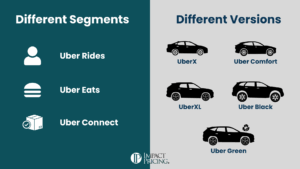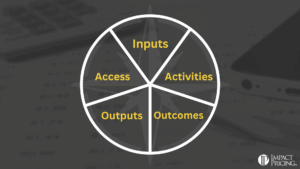Businesses love to talk about “market segments.” The term sounds tidy, strategic, even scientific, as if you could carve a market into perfectly labeled slices. But most companies slice wrong. They confuse versions or value tiers with true market segments.
The difference comes down to this:
Different foundational problems = different market segments.
Same foundational problem, solved to varying degrees = one market segment with potential for various offerings.
A foundational problem is the core “job to be done,” what the customer is hiring your product to solve. If two groups of buyers have different foundational problems, they are in different market segments. If they share the same problem but one wants to solve it more completely, that’s one segment with varying levels of value.
Let’s use LinkedIn and Uber to make the distinction concrete.
LinkedIn: Different Segments, Same Platform
On the surface, LinkedIn looks like one big network. But people hire it for very different jobs:
- Recruiters: I need to find and contact qualified candidates efficiently.
- Salespeople: I need to find and contact qualified leads efficiently.
- Job seekers: I want to be found and contacted by employers.
All use the same data and interface, but for fundamentally different reasons. If LinkedIn disappeared, each would turn to a different substitute, e.g. Indeed, ZoomInfo, or ZipRecruiter. That’s the litmus test: if customers would switch to different types of alternatives, they’re in different segments.
So LinkedIn Recruiter, Sales Navigator, and Premium are different market segments. Each solves a unique foundational problem.
Within each segment, however, LinkedIn offers value tiers in the form of Good-Better-Best (GBB) packages, Sales Navigator Core, Advanced, and Advanced Plus, that solve the same problem at increasing levels of completeness. Every step up adds more of the same kind of value (more filters, better analytics, deeper integrations). That’s what GBB is for: capturing different willingness to pay inside a single segment.
Uber: Segments vs. Versions
At the company level, Uber clearly serves different market segments:
- Uber Rides (People): “I need to get myself from point A to point B.”
- Uber Eats: “I need to get food from a restaurant to me.”
- Uber Connect: “I need to get a package from me to someone else.”
Each solves a different foundational problem, moving people, meals, or parcels, and competes with a different set of alternatives (Lyft, DoorDash, FedEx). That’s classic segmentation.
But when you look within Uber Rides — UberX, Comfort, XL, Black, Green — you’re seeing versions that fit different contexts of the same problem.
- UberX: cheap and fast for one or two people
- Uber Comfort: same trip, quieter car, more legroom
- UberXL: same trip, more seats or luggage
- Uber Black: same trip, more prestige and privacy
- Uber Green: same trip, lower emissions
Each is a lateral variation, not a step up a value ladder. A rider doesn’t “upgrade” from UberX to XL as they mature as a customer; they switch based on situation: group size, luggage, or occasion.
If Uber wanted a true value tier structure, like Good-Better-Best, inside Rides, it would need something like:
- Uber Basic: cheapest fare, shared or slower pickup.
- Uber Priority: faster pickup, preferred drivers, guaranteed quality.
- Uber Executive: dedicated drivers, luxury service, premium support.
Each tier would deliver the same outcome, getting you somewhere, but at increasing levels of completeness and convenience. That would be a real GBB structure.
The Litmus Test
If you’re not sure whether you’re looking at multiple segments or just maturity levels, ask:
“Would a customer in the higher tier still use the features of the lower tier?”
If yes, it’s one market segment with a value ladder. If no, if each group needs different features, they’re different segments.
That’s why LinkedIn Recruiter and Sales Navigator are separate segments, while Sales Navigator Core and Advanced are value tiers. That’s why Uber Eats and Uber Rides are separate segments, while UberX and Uber Comfort are versions based on context within a segment.
Clarity comes from focusing on the why, not the what.
- Different “whys” → different market segments.
- Same “why,” solved more deeply → one segment, different value tiers.
- Same “why,” different situational needs → one segment, multiple versions.
The Takeaway
LinkedIn’s segments are defined by purpose — recruiters, sellers, job seekers — and it uses GBB value tiers within each. Uber’s segments are defined by the type of delivery — people, food, packages — and its ride types are versions for different contexts.
True segmentation starts with understanding what problem the customer is paying you to solve. Everything else, pricing, packaging, positioning, hangs on that one insight.
Get that right, and you stop inventing markets that don’t exist. You start seeing your customers as they actually are: different people, solving different problems, in one connected world of value.
Share your comments on the LinkedIn post.
Now, go make an impact!
 Tags: growth, market segment, market segments, packaging, pricing
Tags: growth, market segment, market segments, packaging, pricing













